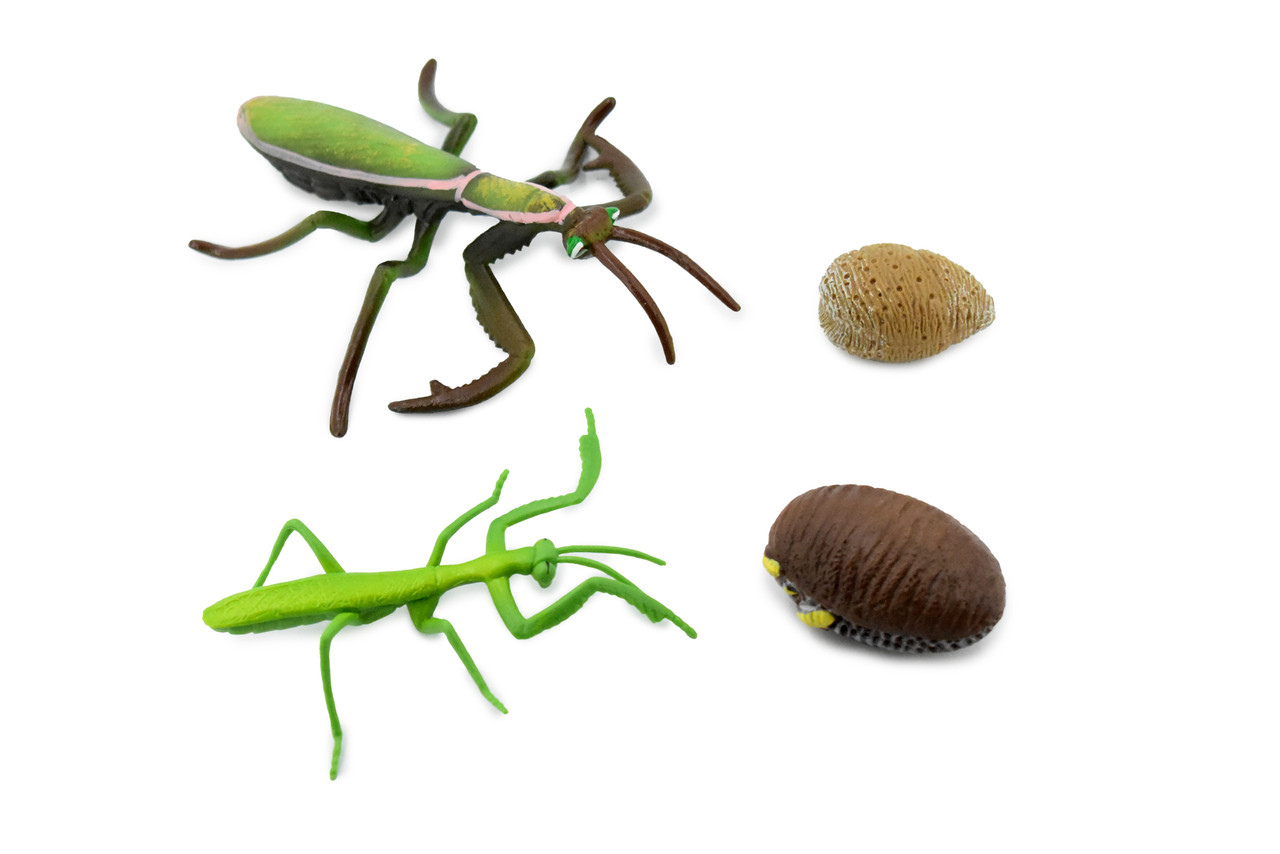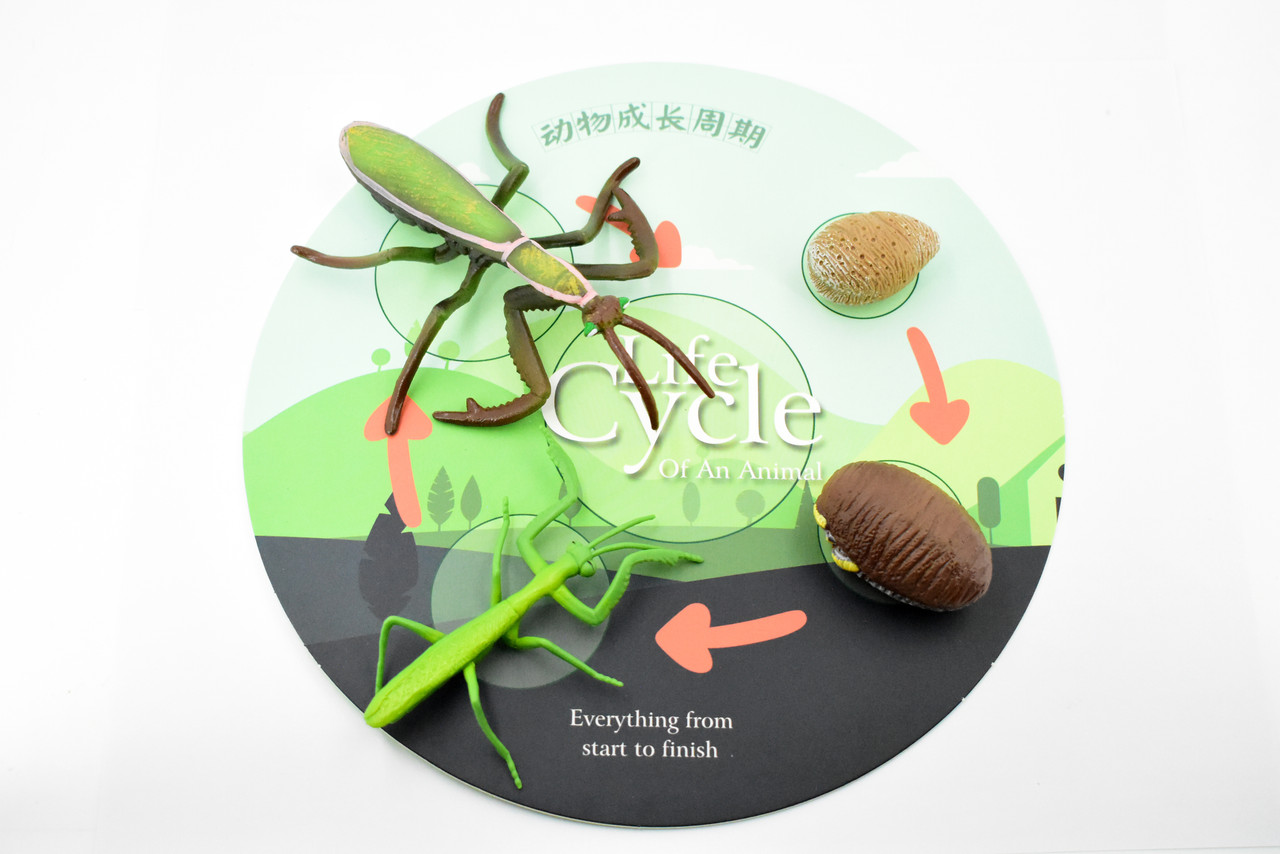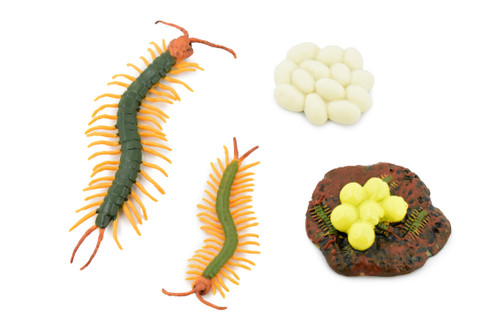Product Description
The praying mantis life cycle can be divided into three life stages; egg, nymph, and adult. Eggs are laid in the fall in an egg case called the ootheca. The ootheca may contain up to 200 praying mantis eggs. It protects the eggs through the winter. When spring arrives, the young nymphs emerge from the ootheca. In this early stage of life, they have no wings but can still hunt small live prey. As they feed, the nymphs grow into adults through metamorphosis. Praying mantis metamorphosis is much different from the complete four-stage metamorphosis of butterflies and moths. Complete metamorphosis includes a larva stage. Praying mantises undergo an incomplete or hemimetabolic metamorphosis, in which the nymph grows directly into the adult. Nymphs grow and molt, shed their exoskeleton, and grow a new one several times to reach the adult stage. Although females generally live longer than males and females, an individual praying mantis life span is not more than one year. They typically live six to twelve months. No adults survive through the winter. Only the ootheca can withstand the winter cold. A female laying the ootheca is shown in the image. Notice her large body size and small wings.
The praying mantis is a large and commonly recognizable insect. It gets its name from the unique form of its forelimbs that it bends in a way that resembles hands in a praying position. That explains the praying part, but what is a mantis? A mantis is a member of a group of insects called mantids. Mantids are characterized by their feeding habits and unique anatomical structures. They are fierce predators that eat a variety of smaller insects. Gardeners consider the praying mantis friendly because it protects their plants from being damaged by smaller insects that feed on vegetables and flowers. One of the special anatomical features is a head that can turn a full 180 degrees to look directly behind it. Like other insects, the praying mantis has six legs. The front legs are highly specialized for grasping onto prey. When these legs are folded under the mantis's head, it looks like it is praying. But it is actually hunting. These strong front legs reach out and grab their prey, stabbing it with sharp spikes on the underside of the legs and holding onto it while the mantis eats. This action is important because praying mantises hunt and eat live prey. The type and size of prey change through the praying mantis life cycle as it grows and develops.
Collectible Wildlife Gifts is the market leader in providing high quality, realistic toys of all types! Every one of our items is heavily inspected for quality craftsmanship and authenticity. Our products make great gifts for your family and friends! Additionally, our lifelike animal figurines and plush make for great displays and educational sets. We are happy to serve our wide range of clientele from parents to educators, gift shop owners and many more!
Our team works hard to ensure you get a great toy. All products from CWG are checked for quality to ensure you receive the order in perfect condition.
From plush sharks to educational animal growths cycle we offer the perfect toy or gift for any occasion. Our products have been ordered by educational groups, aquariums, zoos, and more.
Great customer service is guaranteed when you order from Collectible Wildlife Gifts, we want you to love your toy and have a simple ordering process, we are happy to assist with inquiries!



















